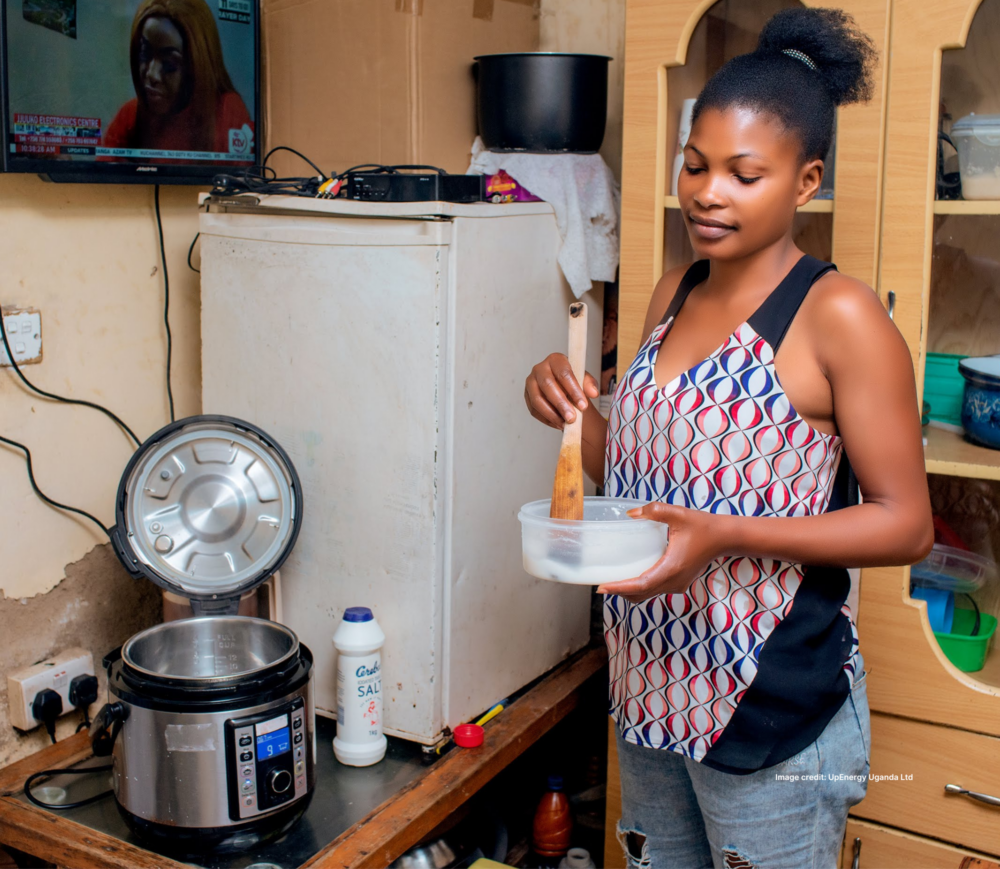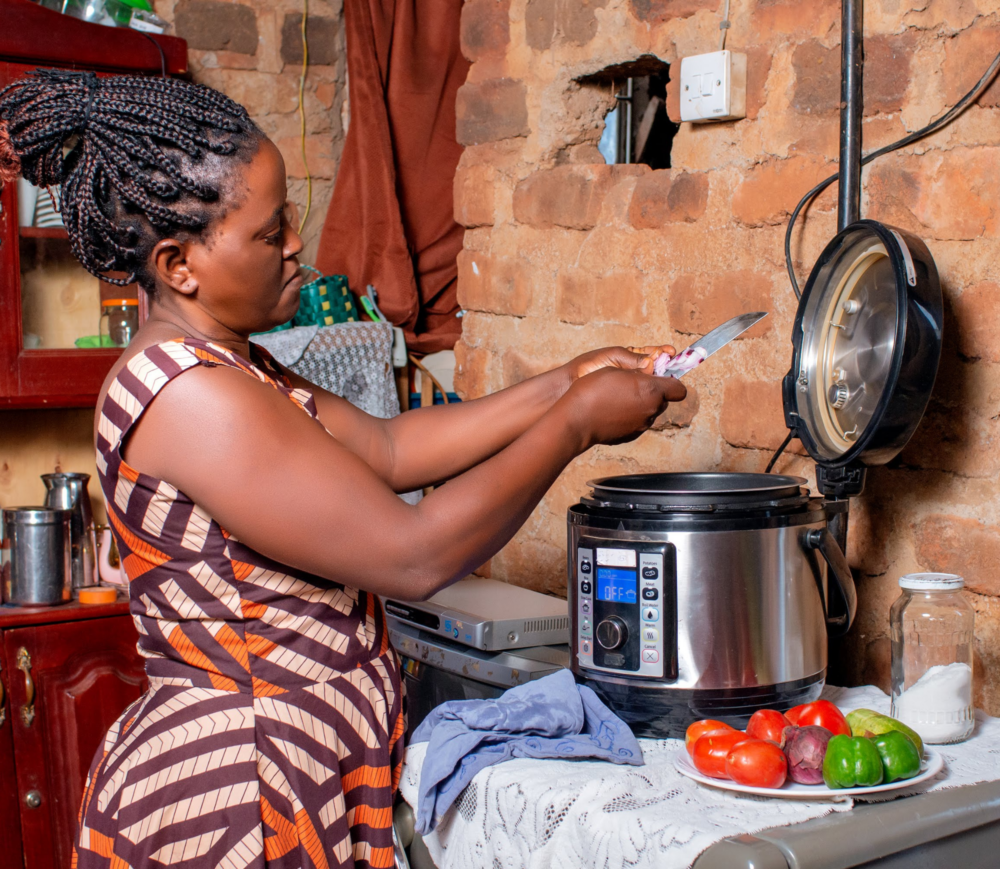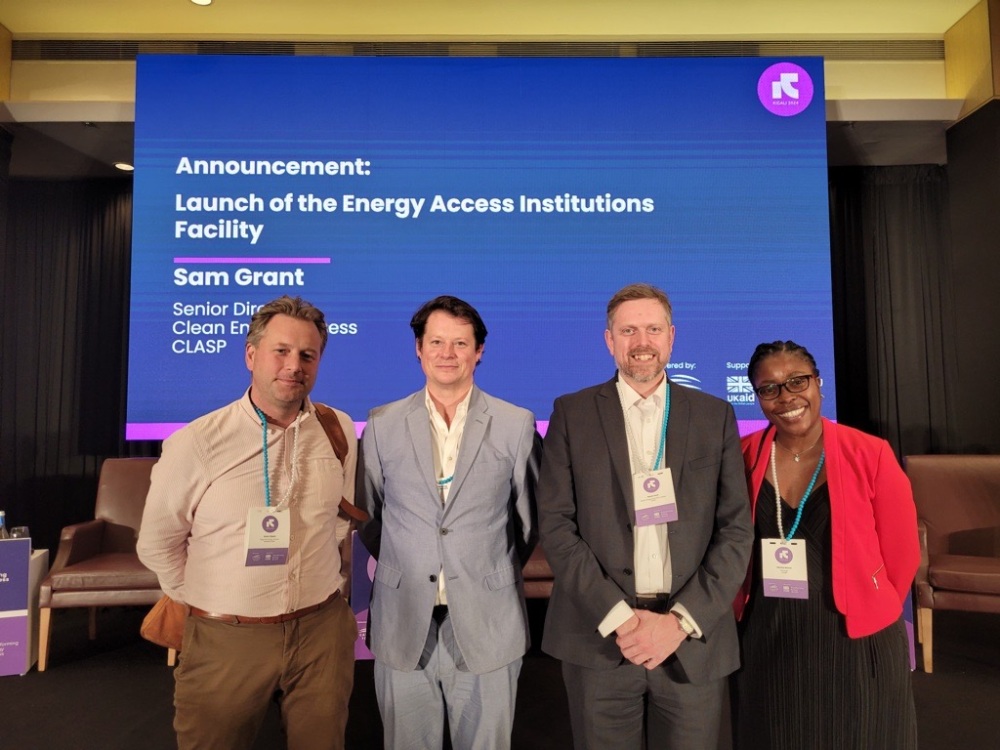Scaling Adoption of Efficient Induction Cookstoves in India
CLASP supported India's Bureau of Energy Efficiency to launch the efficiency policy for induction cookstoves.
Achieving universal access to clean cooking is one of the most significant developmental challenges in India. Heavy reliance on inexpensive and unclean solid fuels such as firewood, dried biomass, cow dung, and coal for cooking exposes millions of Indians to hazardous air pollution, resulting in significant health consequences. According to the National Family Health Survey 5, 41% of households (predominantly in rural India) use solid fuels for cooking. Several studies have indicated that biomass fuel burning for cooking accounts for approximately 40% of India’s air pollution and causes around 800,000 premature deaths annually in the country.1 This poses a considerable risk factor for respiratory diseases, particularly affecting women and children. It also directly contributes to deforestation and greenhouse gas (GHG) emissions, particularly black carbon emissions.
Access to clean cooking energy is a crucial aspect of India’s energy transition journey. It is also an issue of gender equality and inclusivity, as women and girls, who often bear the burden of cooking and fuel collection, are disproportionately affected. Clean cooking solutions not only reduce drudgery and improve their environment but also promote women’s empowerment by freeing up time for education and economic activities — ultimately contributing to a shift in gender roles. These efforts align with a few Sustainable Development Goals, specifically Goal 5 on gender equality and Goal 7 on affordable and clean energy.
Recognizing the health, economic, and environmental benefits of clean cooking, the Government of India (GoI) has prioritized policies that promote cleaner cooking fuels. Notably, the Pradhan Mantri Ujjwala Yojana (PMUY) initiative is aiming to expand the coverage of Liquefied Petroleum Gas (LPG) as a cleaner and more efficient cooking fuel, with a focus on economically weaker families. The scheme has already provided over 70 million LPG connections to date.2 India also has a history of experimenting with smokeless cookstoves, with varying degrees of success.
Undoubtedly, the next significant step in India’s cooking transition will revolve around the electrification of cooking. This becomes particularly relevant with the GoI’s achievement of almost 100% household electrification through the Saubhagya initiative and the substantial growth of renewable energy capacity. In line with this, the Ministry of Power launched the “Go Electric” campaign in 2021, aiming to create mass awareness and encourage the adoption of electric cooking appliances and vehicles. Similarly, the Ministry of Petroleum and Natural Gas (MoPNG), through its agencies, has been promoting research and development of solar cooking systems to reduce dependence on fossil fuel imports.
In 2023, Prime Minister Modi launched a solar-powered indoor cooking system, emphasizing the importance of green and clean cooking in India.
Amongst the various technological options for electric cooking, induction cookstoves have the potential to bring about a paradigm shift and emerge as the ideal choice for clean, energy-efficient cooking in India. In addition to being cleaner and safer, induction cookstoves are easy to operate and resilient. Even under the “ambitious scenario” of NITI Aayog’s India Energy Security Scenario Building Tool, only 14% of rural households will use electricity for cooking by 2047.3 Therefore, marquee policy and market transformation initiatives will be necessary to transition households from fossil fuels and traditional cooking sources to induction cooking.
Recognizing the importance of induction cookstoves for achieving clean cooking, CLASP has supported Bureau of Energy Efficiency in developing an energy efficiency labeling program for induction cookstoves, which was launched in March 2023.
The market size of induction cookstoves in the 2018–2019 fiscal year was estimated to be 4 million units, with reported sales increasing at a compound annual growth rate (CAGR) of 10% from 2014 to 2019. However, despite this figure, only around 5% of the households own electric cooking appliances — of which, only half of those households use it daily. With the introduction of energy efficiency policies for induction cookstoves, there is now a need to promote adoption through awareness-building and user-centric programs.
To encourage the use of efficient and affordable induction cookstoves, a comprehensive feasibility assessment is required. This assessment should analyze the environmental, health, and economic impacts of transitioning to induction cooking. India has a strong track record of designing and implementing user-centric energy efficiency programs such as Bachat Lamp Yojana and LED market transformation. A demand aggregation program in collaboration with an electric utility or oil company has the potential to provide affordable induction cookstoves to consumers. Such a program can also offer cost-effective cooking solutions and consumer financing, making the transition more accessible. Additionally, it can play a crucial role in generating mass awareness and promoting widespread adoption of induction cookstoves.
This article was adapted into a blog for the Times of India.
1. https://www.pmujjwalayojana.com/
2. https://www.ceew.in/sites/default/files/CEEW%20-%20Roadmap%20for%20Access%20to%20Clean%20Cooking%20Energy%20in%20India%20-%20Report%20%2031Oct19-min.pdf









